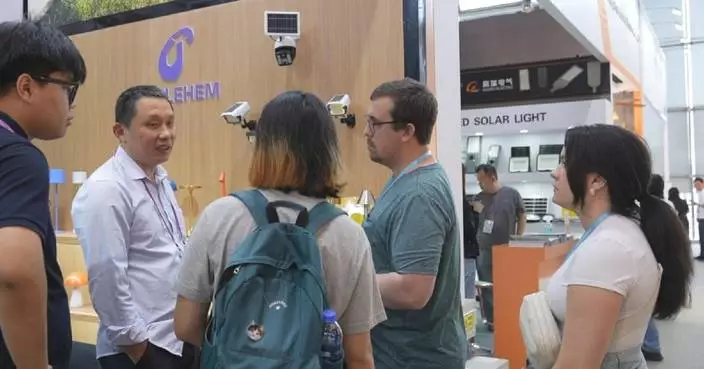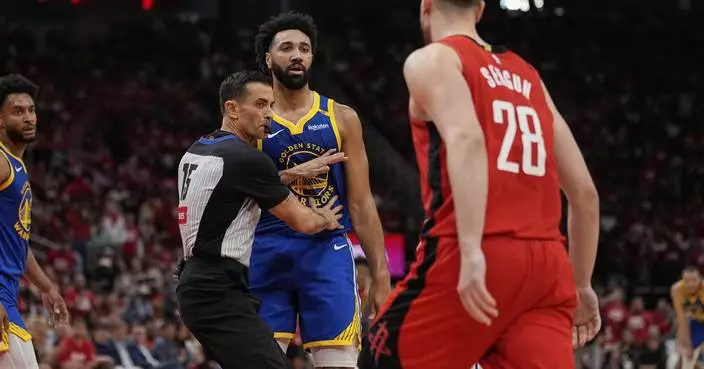South China's Guangxi Zhuang Autonomous Region on Thursday renewed an orange alert for flood first issued two days ago as warning levels have been surpassed at 20 monitoring stations along 14 rivers across the region.
The capital city of Nanning on Wednesday upgraded its emergency response to floods from Level-III to Level-II.
As of Thursday afternoon, the water level at a monitoring station in the Nanning section of the Yujiang River had reached 76.24 meters, 3.24 meters above the warning level and higher than that in the morning.
In order to prevent collision between ships and bridges, the Nanning Maritime Safety Administration is closely following updates on rainfall and water discharges from locks to monitor water levels in bridge areas and issue navigation notices in a timely manner.
"At waterway sections where warning levels have been surpassed, we have implemented temporary traffic control, banning ships from passing through these areas except rescue ships and ships performing official duties," said Wen Jianxin, deputy director of the navigation management office of the administration.
Local authorities started traffic control on the Yongjiang Bridge and in flooded road sections Wednesday evening, banning motor vehicles, non-motor vehicles and pedestrians, while suspending services in some riverside museums and scenic areas.
Since Wednesday, pipe bursts have occurred in several locations along the Yongjiang River. The relevant departments have organized rescuers to evacuate residents and take precautions against dam failure.
As of Thursday morning, Nanning had closed 26 floodgates to prevent the flood from spreading to the urban area.
In the meantime, more than 1,600 people have been deployed to patrol riverbanks, with 3,000 more standing by in case of emergency.
Materials for emergency response have been placed at weak links to prepare for possible breaches.
The regional emergency management department has also transferred to Nanning a total of 5,700 pieces of flood relief materials, including inflatable boats, geotextiles, tents, folding beds, tables and stools, to guarantee the basic living conditions for affected residents.
China has a four-tier flood-control emergency-response system, with Level-I being the most severe response, as well as a four-tier color-coded weather warning system, with red representing the most severe, followed by orange, yellow and blue.

South China’s Guangxi renews 2nd-highest alert for flood as rivers swell
U.S. tariffs on Cambodia, which were set at 49 percent, have sparked concerns among the Southeast Asian country's key export industries such as garment manufacturing amid the ensuing economic uncertainties.
On April 2, U.S. President Donald Trump announced the 49 percent "reciprocal tariff" on goods imported from Cambodia, the highest among all countries. Days later, the U.S. reduced the so-called "reciprocal tariff" to 10 percent for 90 days, offering a window period to Cambodia for negotiations with it.
Cambodian businesspeople say the tariffs have the potential to wreak havoc on the country's manufacturing sector, which, according to data from the World Bank, makes up around a fifth of the country's GDP.
"For U.S. manufacturers, definitely, there will be a big impact. If manufacturers are focusing on U.S. products, they are now in the middle. They don't know what they should do at the moment because the tariff now from Cambodia to the U.S. is actually quite high," said Dr. Ben Li, a Hong Kong investor in Cambodia and Chairman of the Cambodia Chinese Commerce Association.
Nevertheless, Li sees the tariff hike as an opportunity to export more Cambodian goods to the European Union, where a majority of Cambodian exports enjoy duty-free status.
"I always say there will be a light (at the end of the tunnel.) Even now, the U.S. tariff is so high, it's going to be so high after 90 days, we don't know. But, there's still a big market to Japan or to the European Union. There's still a big opportunity there," he said.
The Cambodian investor also believes the development of major infrastructure projects will help support Cambodia's economy.
"Especially the new canal and then the new airport, and the railways which connect to China. I believe once the logistics and infrastructure are built up, it can help the whole country's economy. By reducing the transportation costs, it can also mitigate the tariff costs," he said.
Cambodia and the U.S. held their first tariff negotiations on April 16, with more expected to follow. Local experts said the stakes are high for the country's workers.
"If this negotiation fails, there will be a significant impact. It will include the garment and travel goods sector. These sectors consist of about 1,068 factories and 930,000 workers. The income generated from these sectors is about 3 billion dollars per year. So it would significantly impact Cambodia's economy, jobs and incomes," said Chey Tech, a socio-economic research and development consultant from Dynamic Alliance Consulting.
Despite the potential risks, Tech expressed his optimism about a positive outcome, citing Cambodian Prime Minister Hun Manat's letter to Trump on April 4.
"The Prime Minister's letter confirmed that Cambodia would reduce the tariff rate for U.S. goods to 5 percent. Second, Cambodia is the least developed country. Third, Cambodia produces goods that the developed countries won't produce. We asked whether the U.S. would be able to produce these low-cost products. It cannot," said Tech.
In 2024, Cambodia exported goods of 9.9 billion dollars to the U.S., making it the country's largest market, accounting for 37 percent of Cambodia's total exports.

49-percent US tariffs sparks worry among Cambodia's key export industries





















































